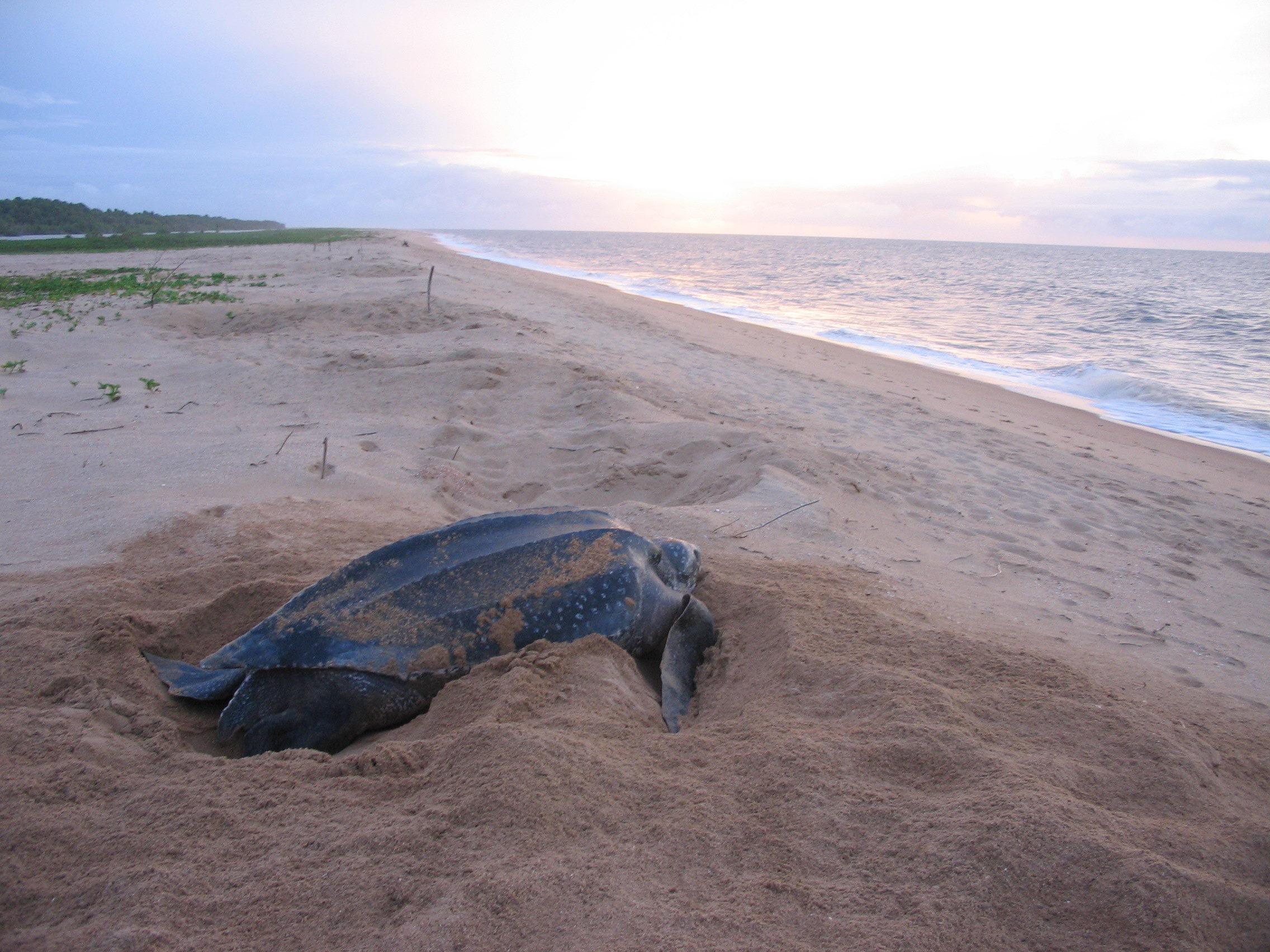|
Palicourea Bracteocardia
''Palicourea bracteocardia'' is a species of shrub from the genus ''Palicourea''. Distribution ''Palicourea bracteocardia'' is described as being found in Brazil, Colombia, French Guiana, Guyana, Suriname and Trinidad and Tobago. Recordings by various citizen science initiatives confirm this, but also suggest that the species can also be found in Venezuela. Taxonomy ''Palicourea bracteocardia'' is a taxon name that is a combinatio nova In biological taxonomy, a combinatio nova (abbreviated comb. nov. or n. comb.) refers to the formal renaming of an organism's scientific name when it is transferred to a different genus, reclassified within a different species, or its taxonomic ... from 2016. This means the species was described earlier but restructured into the genus '' Palicouria''. Previously, the species was thought to be part of the genera '' Cephaelis'' or '' Uragoga''. References bracteocardia Flora of Suriname Flora of Brazil Flora of Colombia Flora of Fren ... [...More Info...] [...Related Items...] OR: [Wikipedia] [Google] [Baidu] |
Species
A species () is often defined as the largest group of organisms in which any two individuals of the appropriate sexes or mating types can produce fertile offspring, typically by sexual reproduction. It is the basic unit of Taxonomy (biology), classification and a taxonomic rank of an organism, as well as a unit of biodiversity. Other ways of defining species include their karyotype, DNA sequence, morphology (biology), morphology, behaviour, or ecological niche. In addition, palaeontologists use the concept of the chronospecies since fossil reproduction cannot be examined. The most recent rigorous estimate for the total number of species of eukaryotes is between 8 and 8.7 million. About 14% of these had been described by 2011. All species (except viruses) are given a binomial nomenclature, two-part name, a "binomen". The first part of a binomen is the name of a genus to which the species belongs. The second part is called the specific name (zoology), specific name or the specific ... [...More Info...] [...Related Items...] OR: [Wikipedia] [Google] [Baidu] |
Combinatio Nova
In biological taxonomy, a combinatio nova (abbreviated comb. nov. or n. comb.) refers to the formal renaming of an organism's scientific name when it is transferred to a different genus, reclassified within a different species, or its taxonomic rank is altered. Unlike the naming of a new species (), a ''combinatio nova'' does not describe a previously unknown organism but reorganizes an existing name to reflect updated understanding of its relationships or classification. For example, when a species is moved to a new genus, its specific epithet is retained and combined with the new genus name, forming the new combination. This process ensures consistency and accuracy in naming while adhering to the rules established by nomenclature codes. The concept of ''combinatio nova'' plays a vital role in maintaining the stability and traceability of scientific names as taxonomic classifications evolve. Creating a valid ''combinatio nova'' requires proper citation of the original name, kno ... [...More Info...] [...Related Items...] OR: [Wikipedia] [Google] [Baidu] |
Flora Of French Guiana
Flora (: floras or florae) is all the plant life present in a particular region or time, generally the naturally occurring ( indigenous) native plants. The corresponding term for animals is ''fauna'', and for fungi, it is '' funga''. Sometimes bacteria and fungi are also referred to as flora as in the terms ''gut flora'' or ''skin flora'' for purposes of specificity. Etymology The word "flora" comes from the Latin name of Flora, the goddess of plants, flowers, and fertility in Roman mythology. The technical term "flora" is then derived from a metonymy of this goddess at the end of the sixteenth century. It was first used in poetry to denote the natural vegetation of an area, but soon also assumed the meaning of a work cataloguing such vegetation. Moreover, "Flora" was used to refer to the flowers of an artificial garden in the seventeenth century. The distinction between vegetation (the general appearance of a community) and flora (the taxonomic composition of a community) wa ... [...More Info...] [...Related Items...] OR: [Wikipedia] [Google] [Baidu] |
Flora Of Colombia
The Flora of Colombia is characterized by over 32,000 species of green plants. National Flower of Colombia The national flower of Colombia is the orchid '' Cattleya trianae'' which was named after the Colombian naturalist José Jerónimo Triana. The orchid was selected by botanist Emilio Robledo, in representation of the Colombian Academy of History to determine the most representative flowering plant of Colombia. He described it as one of the most beautiful flowers in the world and selected ''Cattleya trianae'' as National symbol. National Tree of Colombia The national tree of Colombia is the palm '' Ceroxylon quindiuense'' (Quindío wax palm) which was named after the Colombian Department of Quindío where is located the Cocora valley, the only habitat of this restricted range species. The Quindío wax palm was selected as the national tree by the government of Belisario Betancur and was the first tree officially declared as a protected species in Colombia. ''C.quindi ... [...More Info...] [...Related Items...] OR: [Wikipedia] [Google] [Baidu] |
Flora Of Brazil
The wildlife of Brazil comprises all naturally occurring animals, plants, and fungus, fungi in the South American country. Home to 60% of the Amazon Rainforest, which accounts for approximately one-tenth of all species in the world, Brazil is considered to have the greatest biodiversity of any country on the planet. It has the most known species of plants (60,000), freshwater fish (3,000), Amphibian, amphibians (1,188), Snake, snakes (430), Insect, insects (90,000) and mammals (775). It also ranks third on the list of countries with the most bird species (1,971) and the third with the most reptile species (848). The number of fungal species is unknown (+3,300 species).Da Silva, M. and D.W. Minter. 1995. ''Fungi from Brazil recorded by Batista and Co-workers''. Mycological Papers 169. CABI, Wallingford, UK. 585 pp. Approximately two-thirds of all species worldwide are found in tropical areas, often coinciding with developing cou ... [...More Info...] [...Related Items...] OR: [Wikipedia] [Google] [Baidu] |
Flora Of Suriname
The biodiversity of Suriname is high, mostly because of the variety of habitats and warm temperatures. The average annual temperature in the coastal area is between 26° and 28°C. Suriname can be divided into four major ecological zones, namely from north to south; # The young coastal plain # The old coastal plain # The Savannah or Zanderij belt # The interior residual uplands Habitats and species The coast of Suriname is wild and consists of mud banks, sand beaches, mangrove forests and lagoons. The Guiana current flows along the coast of Suriname. The North Brazil Current, a warm water ocean current, is renamed as the Guiana current. The confusion surrounding its name is due partly to the seasonal change in flow of nearby currents. The mangrove forests have only one story with a height of 20–25 meters. They are almost completely homogeneous and dominated by black mangrove (''Avicenna germinans''). The mangrove forests are important as staging and wintering areas for birds ... [...More Info...] [...Related Items...] OR: [Wikipedia] [Google] [Baidu] |
Uragoga
''Psychotria'' is a large genus of flowering plants in the coffee family Rubiaceae, with over 1,600 species. The genus has a pantropical distribution and members of the genus are small understorey trees in tropical forests. Some species are endangered or facing extinction due to deforestation, especially species of central Africa and the Pacific. Many species, including ''Psychotria viridis'', produce the psychedelic chemical dimethyltryptamine (DMT). Selected species * ''Psychotria abdita'' * '' Psychotria acutiflora'' * ''Psychotria adamsonii'' * '' Psychotria alsophila'' * '' Psychotria angustata'' * ''Psychotria atricaulis'' * '' Psychotria beddomei'' * ''Psychotria bimbiensis'' * ''Psychotria bryonicola'' * '' Psychotria camerunensis'' * ''Psychotria capensis'' * '' Psychotria carronis'' * ''Psychotria carthagenensis'' * ''Psychotria cathetoneura'' * ''Psychotria cernua' * ''Psychotria chalconeura'' * ''Psychotria chimboracensis'' * ''Psychotria clarendonensis'' * ''Psyc ... [...More Info...] [...Related Items...] OR: [Wikipedia] [Google] [Baidu] |
Venezuela
Venezuela, officially the Bolivarian Republic of Venezuela, is a country on the northern coast of South America, consisting of a continental landmass and many Federal Dependencies of Venezuela, islands and islets in the Caribbean Sea. It comprises an area of , and its population was estimated at 29 million in 2022. The capital and largest urban agglomeration is the city of Caracas. The continental territory is bordered on the north by the Caribbean Sea and the Atlantic Ocean, on the west by Colombia, Brazil on the south, Trinidad and Tobago to the north-east and on the east by Guyana. Venezuela is a presidential republic consisting of States of Venezuela, 23 states, the Venezuelan Capital District, Capital District and Federal Dependencies of Venezuela, federal dependencies covering Venezuela's offshore islands. Venezuela is among the most urbanized countries in Latin America; the vast majority of Venezuelans live in the cities of the north and in the capital. The territory o ... [...More Info...] [...Related Items...] OR: [Wikipedia] [Google] [Baidu] |
Genus
Genus (; : genera ) is a taxonomic rank above species and below family (taxonomy), family as used in the biological classification of extant taxon, living and fossil organisms as well as Virus classification#ICTV classification, viruses. In binomial nomenclature, the genus name forms the first part of the binomial species name for each species within the genus. :E.g. ''Panthera leo'' (lion) and ''Panthera onca'' (jaguar) are two species within the genus ''Panthera''. ''Panthera'' is a genus within the family Felidae. The composition of a genus is determined by taxonomy (biology), taxonomists. The standards for genus classification are not strictly codified, so different authorities often produce different classifications for genera. There are some general practices used, however, including the idea that a newly defined genus should fulfill these three criteria to be descriptively useful: # monophyly – all descendants of an ancestral taxon are grouped together (i.e. Phylogeneti ... [...More Info...] [...Related Items...] OR: [Wikipedia] [Google] [Baidu] |
Citizen Science
The term citizen science (synonymous to terms like community science, crowd science, crowd-sourced science, civic science, participatory monitoring, or volunteer monitoring) is research conducted with participation from the general public, or amateur/nonprofessional researchers or participants of science, social science and many other disciplines. There are variations in the exact definition of citizen science, with different individuals and organizations having their own specific interpretations of what citizen science encompasses. Citizen science is used in a wide range of areas of study including ecology, biology and conservation, health and medical research, astronomy, media and communications and information science. There are different applications and functions of "citizen science" in research projects. Citizen science can be used as a methodology where public volunteers help in collecting and classifying data, improving the scientific community's capacity. Citizen sc ... [...More Info...] [...Related Items...] OR: [Wikipedia] [Google] [Baidu] |





